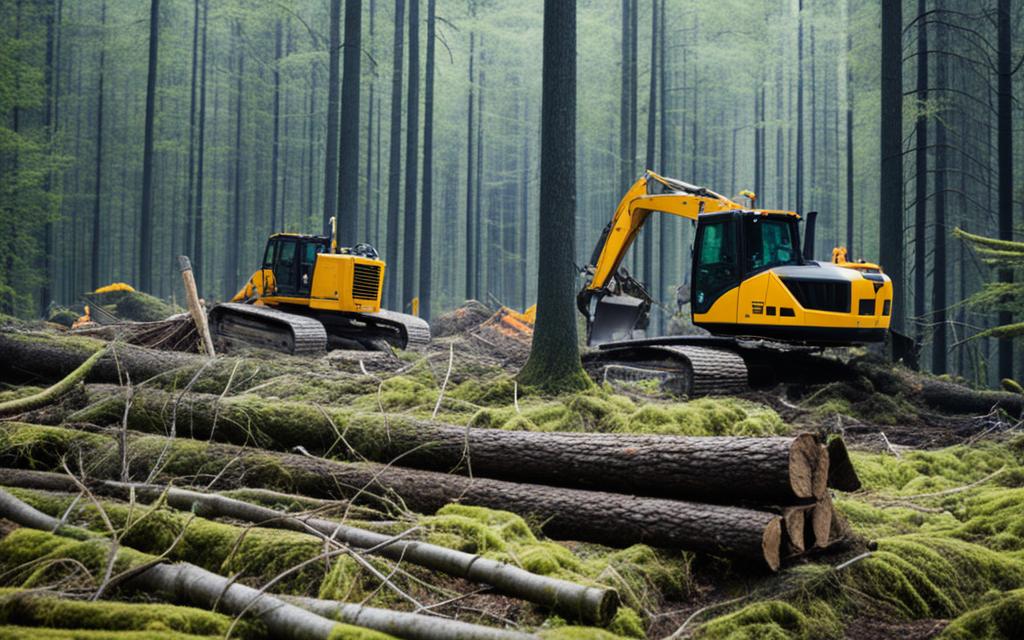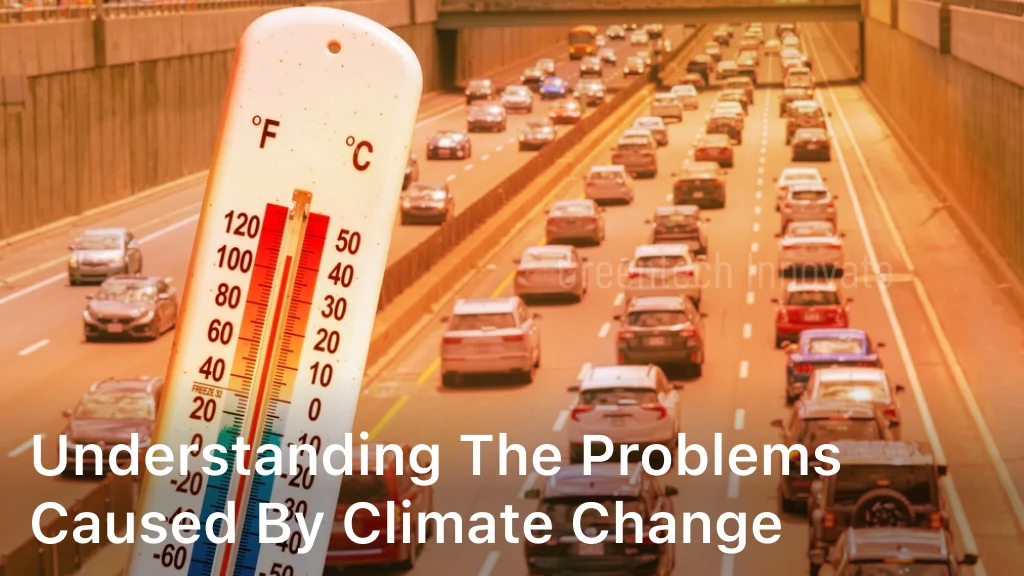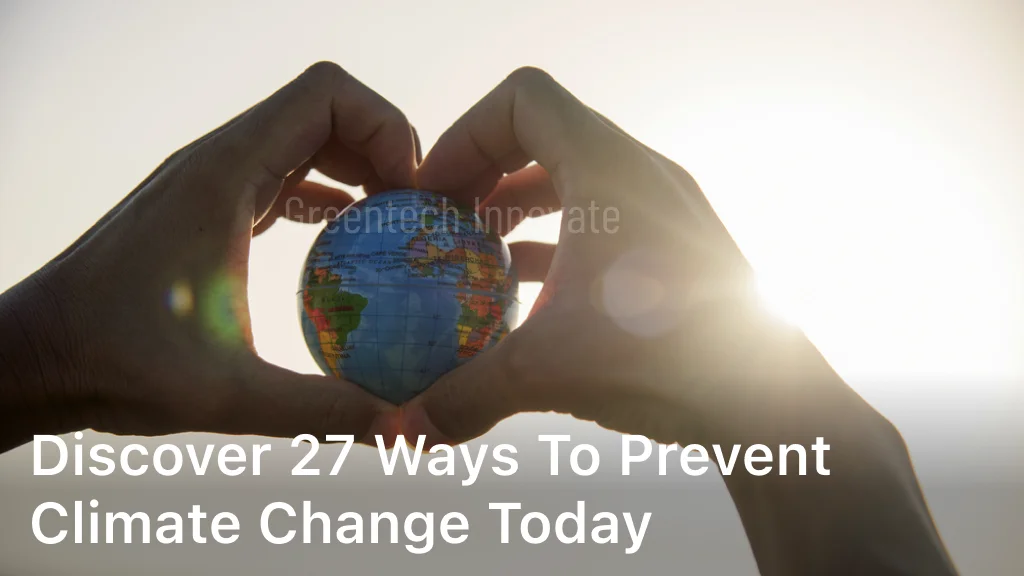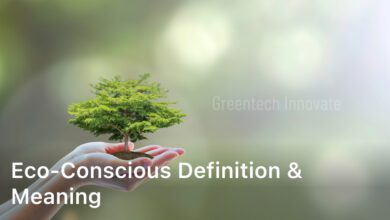
How Does Deforestation Affect Climate Change? Deforestation is a crisis that affects us all. Every year, up to 15 billion trees are cut down worldwide. This leads to forest destruction and harms our planet. Forests help with food, shelter, rainfall, water and soil quality. They also prevent flooding.
Clear signs show that forest loss and damage is behind roughly 10% of global warming. We can’t fight the climate crisis without stopping deforestation. Deforestation’s contribution to climate change is a major concern. We must take action to save Earth’s future.
Forests act as the planet’s lungs, absorbing carbon dioxide and giving oxygen. But when trees are cut, the stored carbon is released. This worsens deforestation’s effects on Earth’s temperature and messes with the carbon cycle. Breaking this link between deforestation and climate change should be our goal.
Knowing about the deforestation impact on global warming is key to tackling the climate crisis. We must understand the role of forests in climate regulation. Doing so helps us address the climate consequences of deforestation. We can then work to protect our planet’s forests.
What is Deforestation?
Deforestation is when large areas of forests are purposely cut down. This is often done to make room for farming, industry, or cities. The problem is very big and about 15 billion trees are lost every year. Cutting down trees harms our local surroundings and also affects our world’s weather and living things.
Rapid Forest Destruction Rates
Forest destruction happens very quickly. In the time it takes to say “deforestation,” a forest the size of a football field is gone. This loss occurs every two seconds, every day. The earth has about half as many trees now as it did when humans first came about.
Unsustainable Deforestation Practices
Many things cause deforestation, like needing more space for crops, raising animals, and chopping trees for sale. These events wipe out large parts of tropical forests. These forests are super important for our planet and everyone living on it. The effects on the weather, different kinds of life, and local people are very serious. Deforestation needs to be stopped fast and completely.
Importance of Forests
Forests are crucial for our planet’s health. They are the main source of food and shelter for many plants, animals, and birds. These places not only support a wide range of life but also help control the weather, keep water and soil clean, and prevent floods.
Habitat for Biodiversity
Forests are the homes of countless plants and animals. They create a complex ecosystem that hosts a lot of life. It’s important to protect these areas to keep the natural world in balance and save many species.
Regulating Rainfall and Soil Quality
Forests are key in managing the water cycle and soil health. They help control how and when it rains, keeping water fresh for people and places. Their deep roots also stop soil from washing away. This keeps land fertile for farming and growing food.
Carbon Absorption and Storage
Forests take in and store a lot of carbon dioxide, a gas that causes global warming. Trees absorb carbon as they grow. This important job helps keep the planet’s temperature from rising too fast. It fights the harmful impact of cutting down trees on the carbon in the air.
How Does Deforestation Affect Climate Change
Deforestation greatly affects our planet’s climate in many ways. When trees are cut, it is bad for our climate in two big ways. First, cutting trees releases more carbon dioxide. Second, it means less carbon dioxide gets taken out of the air. Trees are key for balancing carbon levels naturally.
Reduced Carbon Absorption Capacity
Forests are like giant carbon storage units. They soak up a lot of carbon dioxide from the air. For example, the Amazon rainforest’s trees hold 48 billion tons of carbon. Yet, when these trees are cut down, all this stored carbon is released, adding to the greenhouse effect.
Increased Greenhouse Gas Emissions
Deforestation is a big part of why our climate is changing. It causes about 10% of the world’s greenhouse gas emissions, as the first source explains. As trees disappear, what’s left can produce more greenhouse gases. For example, clearing lands for crops or raising livestock can release more carbon dioxide into the air.
Disruption of the Carbon Cycle
Forests are vital for keeping the carbon dioxide in check. They help maintain the balance of this gas between the air, plants, and ground. But, when forests are cut down, important parts of this process are lost. This leads to a rise in greenhouse gas levels, making climate change worse.
Causes of Deforestation
Deforestation happens because of many reasons. Yet, much of it comes from people trying to make money or meet society’s needs. Huge amounts of trees are cut down for meat, soya, and palm oil farming. This is mainly to feed animals like pigs and birds for the world’s meat demand.
Agricultural Expansion
The need for more food and space is pushing the world to cut down more forests. Places like the Amazon are seeing a big loss of trees because of growing crops and raising animals. As more people need to eat, more land is needed, harming natural forests.
Livestock Farming
Producing meat and dairy also leads to cutting down trees. In South America, huge areas of forests are cleared to make room for cows. This also includes growing soya for livestock feed. The rush for cheap meat and dairy is causing harm to our climate and animal life.
Commercial Logging
Logging, both legal and illegal, is a big issue too. Trees are chopped for wood products without thinking about the long-term damage. The lack of strict rules and control is causing forests to disappear faster than they can grow back.
The main areas where deforestation happens are in the tropics. But, the demand from all around the world, including the U.S., is a big part of the problem. The choices we make, like eating chicken and beef, can have a hidden effect on forests. To solve this, we need to think more about how we produce and choose our food.

Deforestation’s Impact on Climate Patterns
Deforestation greatly affects climate change. Its most significant impact is on planet-wide climate patterns. Forests help control rainfall, maintain water and soil, and prevent floods. These are essential services for millions worldwide. But when trees are cut down, it messes up the climate in big and small ways.
Altered Rainfall Patterns
Rainfall changes a lot without forests. They influence the water cycle, making rain through their transpiration and cloud formation. Without trees, rain patterns change. We see more or less rain, at different times. This can cause droughts, floods, and extreme weather. These events harm communities and the natural world that depend on stable rain.
Increased Flood and Drought Risks
Forests help prevent floods and droughts too. Their roots and plants control water flow and stop soil from eroding. But, when trees are gone, soil gets weak against floods and can’t hold water in dry times. This leads to more floods and droughts. It’s bad for both towns and countryside. It affects water supply and crops, hurting whole communities.
Deforestation’s Contribution to Global Warming
Deforestation plays a big part in heating up the planet, accounting for about 10% of global warming. Scientific studies confirm that when we cut down forests, we upset the Earth’s carbon balance. This causes a dangerous increase in greenhouse gas emissions.
Deforestation’s Role in Rising Temperatures
Experts agree – we can’t tackle the climate crisis without stopping deforestation. When we remove forests, we lose a vital way of naturally capturing carbon. Plus, cutting down trees lets out stored carbon. This makes the greenhouse effect worse and spikes global temperatures.
Forests as Carbon Sinks
Trees are vital for keeping our carbon levels in check by absorbing and storing carbon dioxide. But if we clear forests, the trapped carbon is let loose. Then, more greenhouse gases are free to warm up our planet. This is a key reason why deforestation needs to be stopped to push back the climate crisis.
Efforts to Combat Deforestation
The link between deforestation and climate change is now very clear. Many projects are working hard to tackle this big problem. The Nature Conservancy is leading the fight, teaming up with folks in Brazil to slow down and stop cutting trees.
Sustainable Forest Management
The Nature Conservancy is teaming with the Brazilian government. They’re improving how they watch deforestation and follow the Forest Code. This code helps in managing forests without harming them. It looks to keep the trees safe, helps the people nearby, and also supports the economy.
Reforestation Initiatives
Besides saving existing forests, the Nature Conservancy is planting new trees too. They’re working with farmers and others to regrow forests on old, damaged lands. This green effort helps in many ways. It traps carbon, helps many different plants and animals to live, and supports the climate.
Policy and Regulatory Changes
Stopping deforestation means changing the way companies and governments do things. The Nature Conservancy is working with them to make better choices. This includes urging for stricter rules on how land is used. Their aim is to cut down on forest loss and the harmful gases that come from it.
The Nature Conservancy is in this battle for the long haul. They and their friends aim to keep forests doing what they do best for the planet. Their work is crucial in adjusting the impacts of deforestation on the changing climate.
Role of Forests in Climate Regulation
Forests greatly impact our planet’s climate. They influence rainfall, help with water and soil quality, and prevent floods. Many people directly depend on forests for these vital services.
Forests are essential in controlling climate because they absorb carbon dioxide. Trees are like natural sponges, soaking up this gas. But, when people cut down trees, the stored carbon goes back into the air. This contributes to global warming, says the first source.
The breakdown of this carbon balance due to deforestation has serious effects. It reduces the earth’s ability to capture carbon. It also changes climate patterns, making weather more extreme. This includes shifts in rainfall, more floods and droughts, and rising temperatures.
We must protect and regrow our forests to fight climate change. By saving these important areas, we help keep the climate in check. This is key for a sustainable and secure future.
Conclusion
In conclusion, we can see that cutting down trees hurts our planet. Trees are like giant sponges for carbon dioxide. When we cut them, less carbon dioxide gets caught and more is in the air. This makes global warming worse.
Forests do more than just provide oxygen. They also help with rain, filter water, and stop floods. Millions rely on these forest services. But when trees are cut, the effects on the climate are bad. This adds to our climate problems.
We need to fight deforestation and its effects on the climate. To do this, we must manage forests well and plant new trees. Laws must also protect forests. It’s our only way to save the planet for the future.




